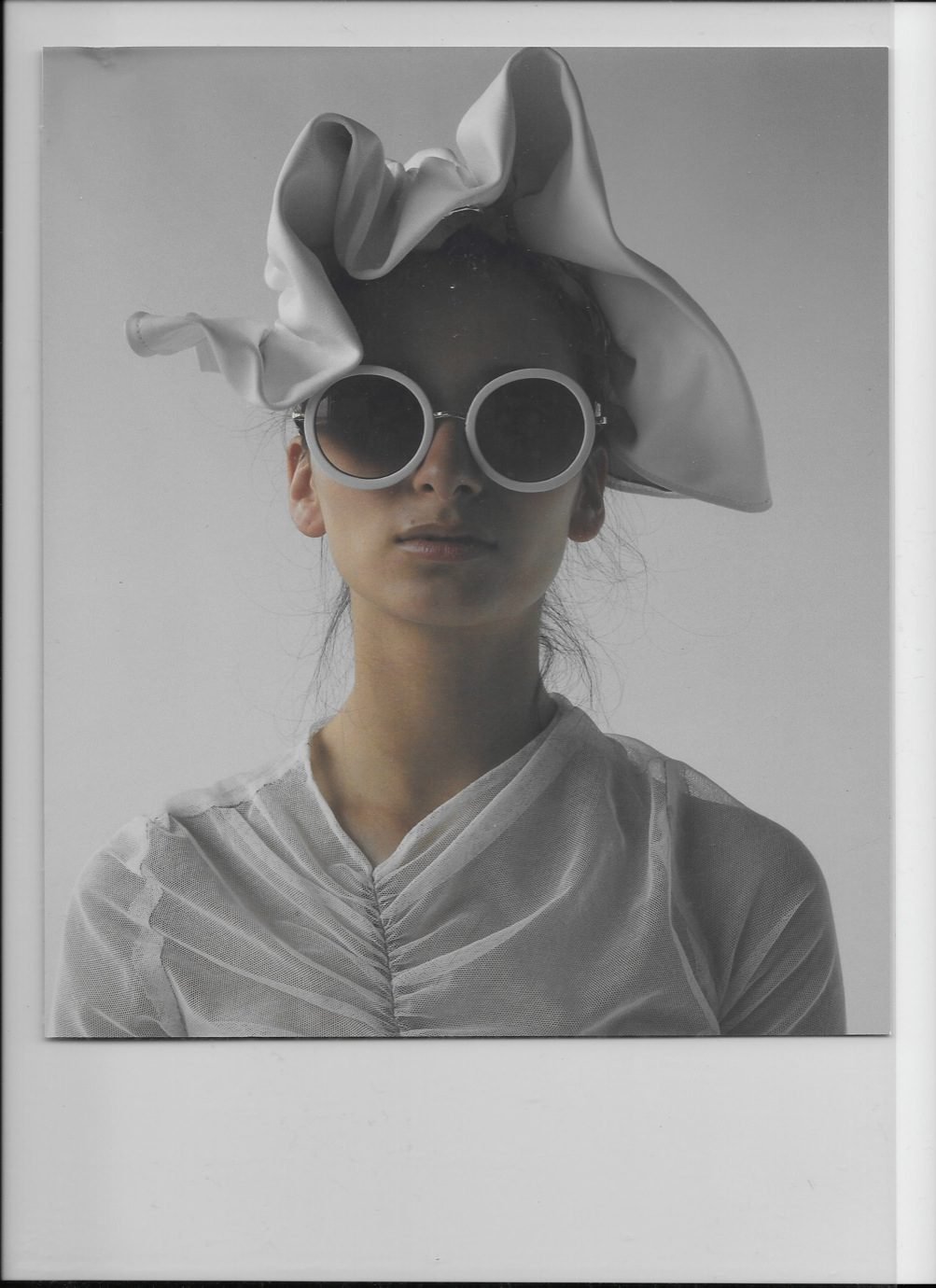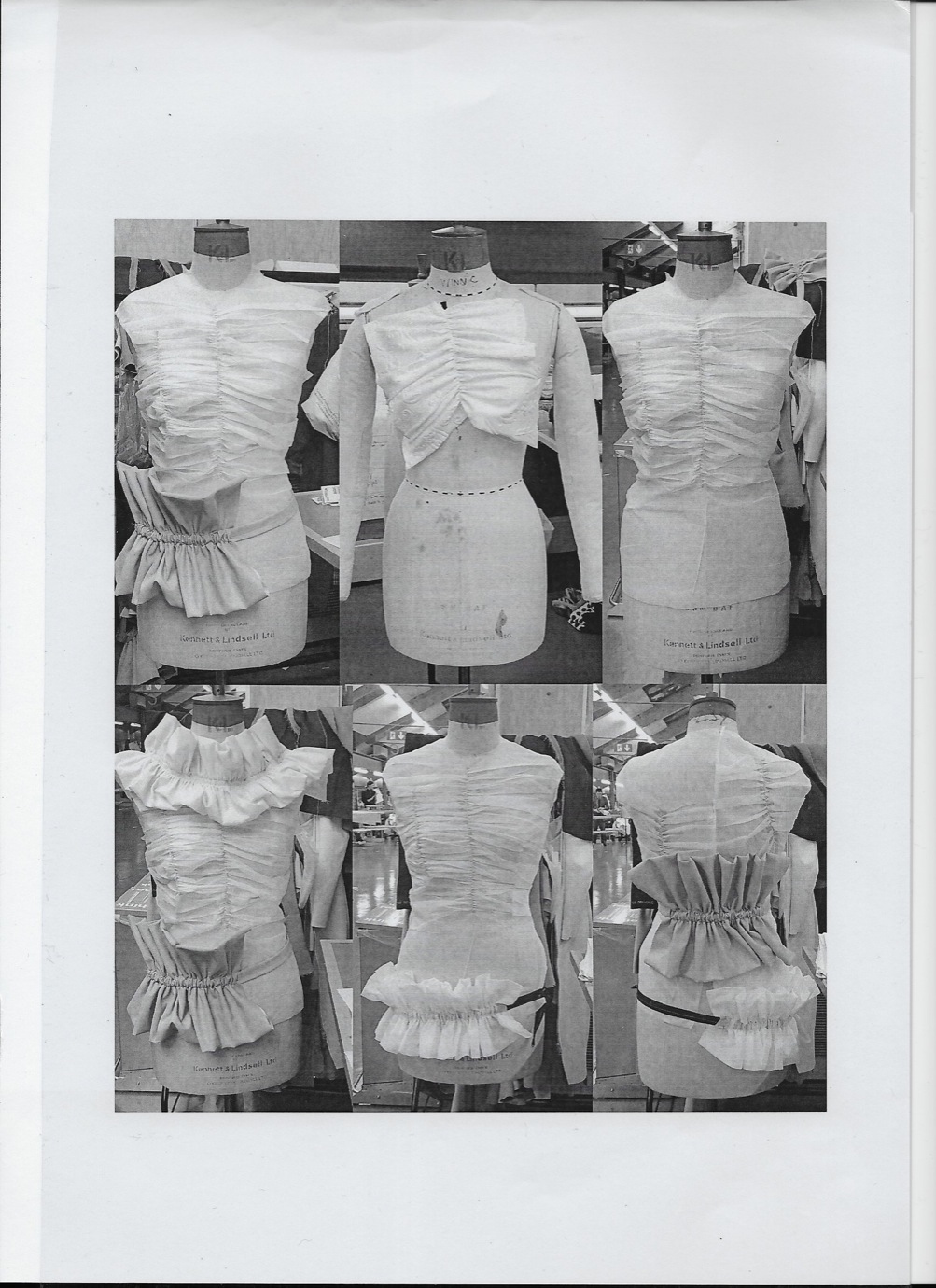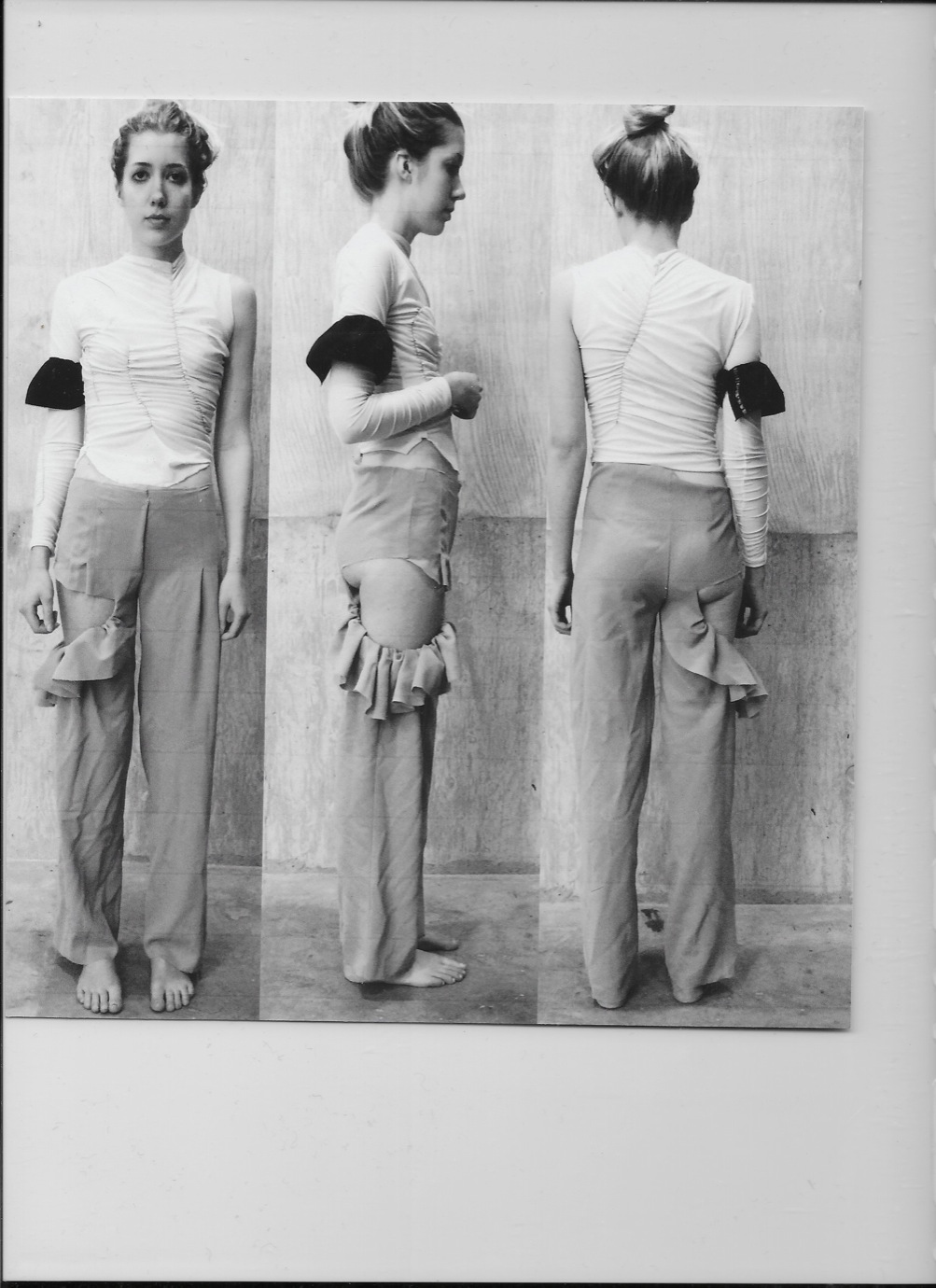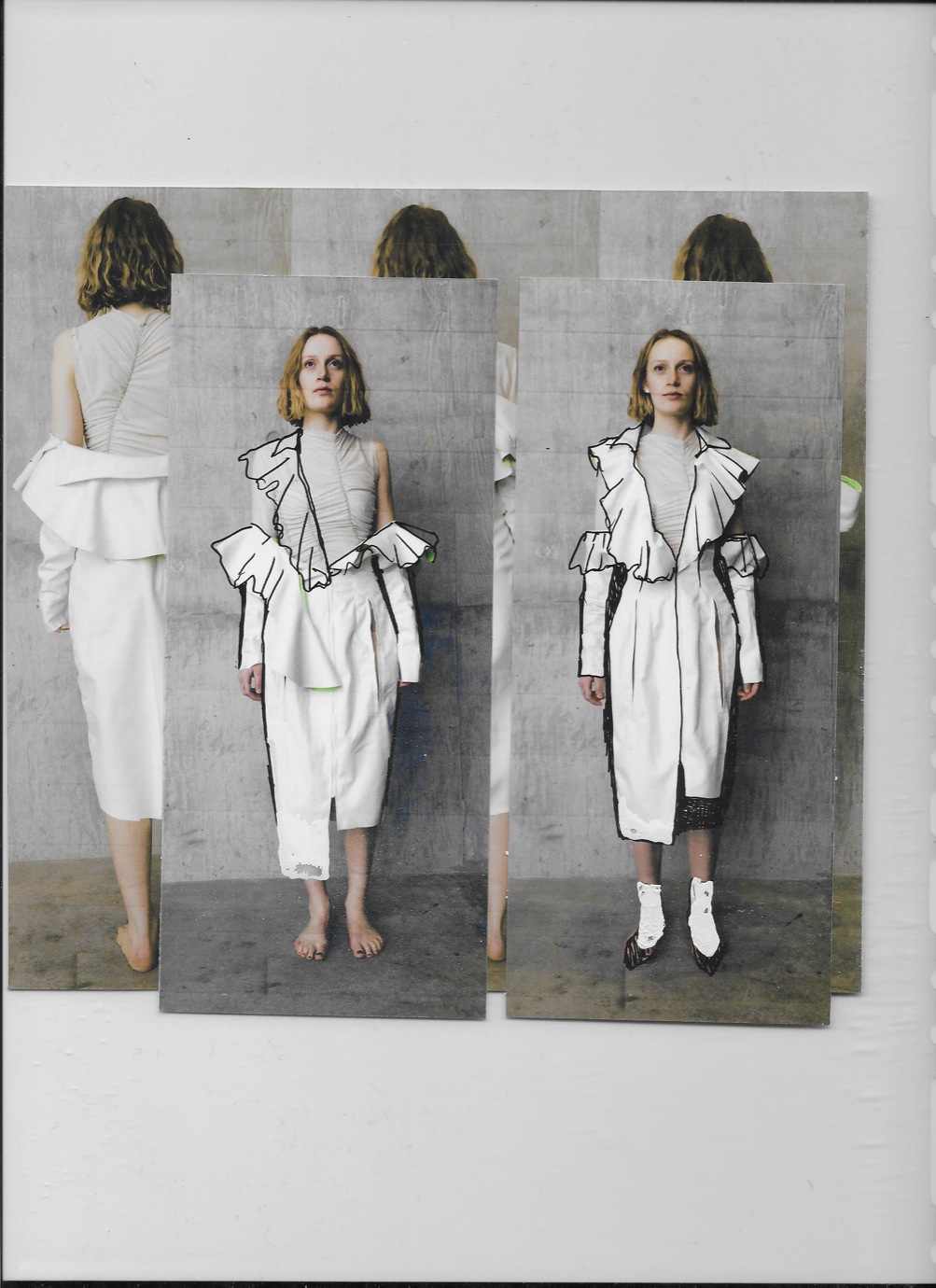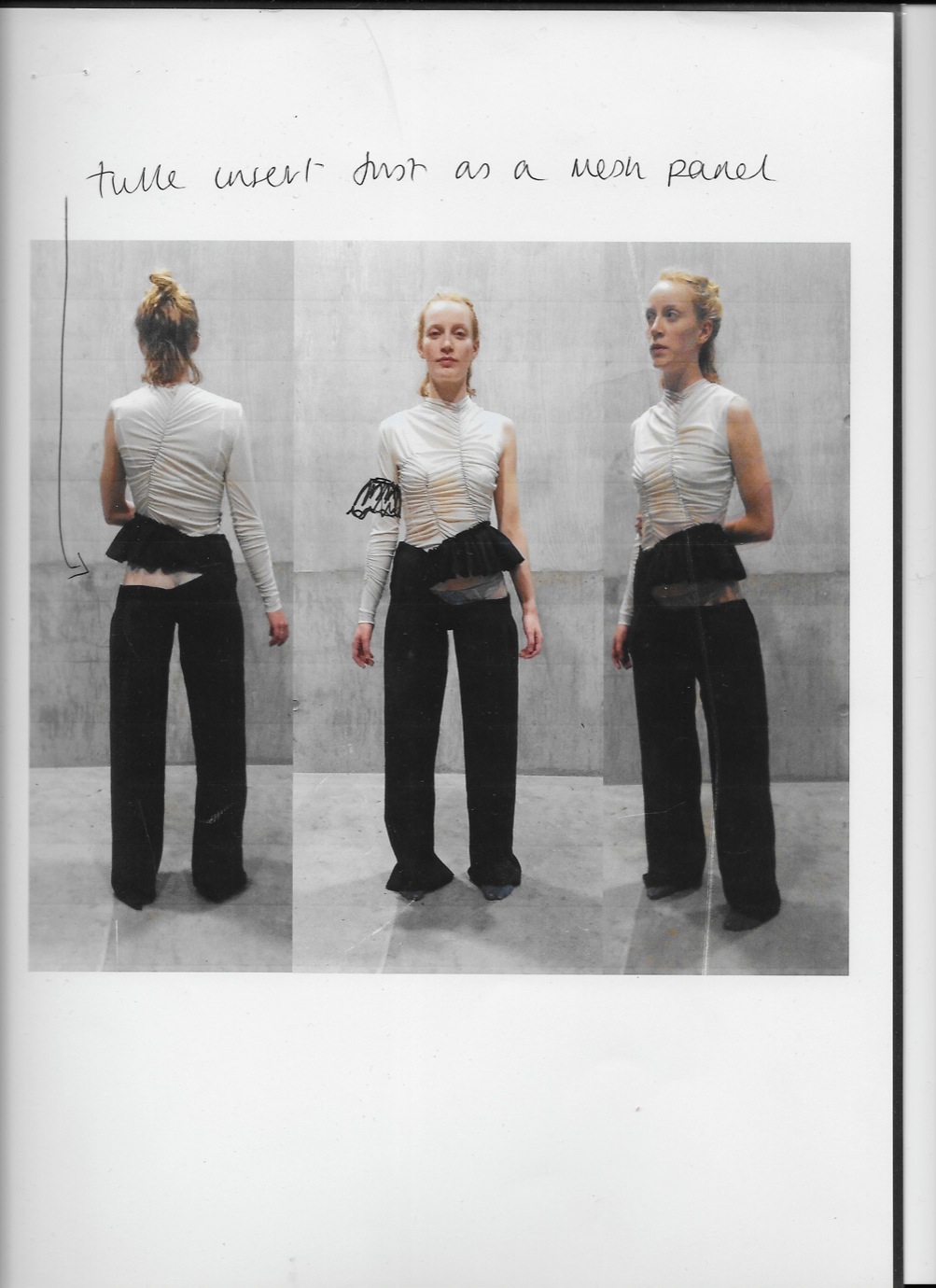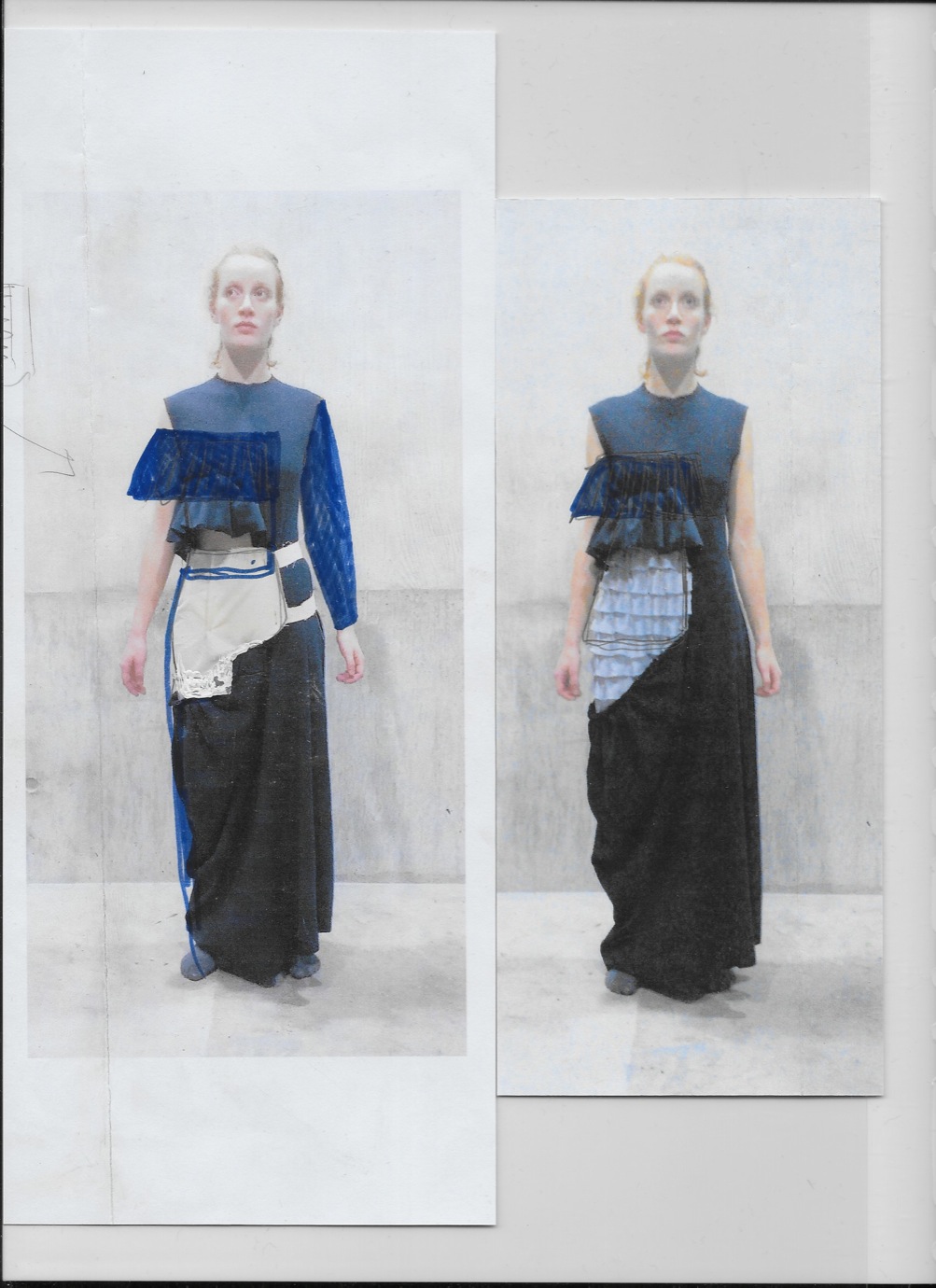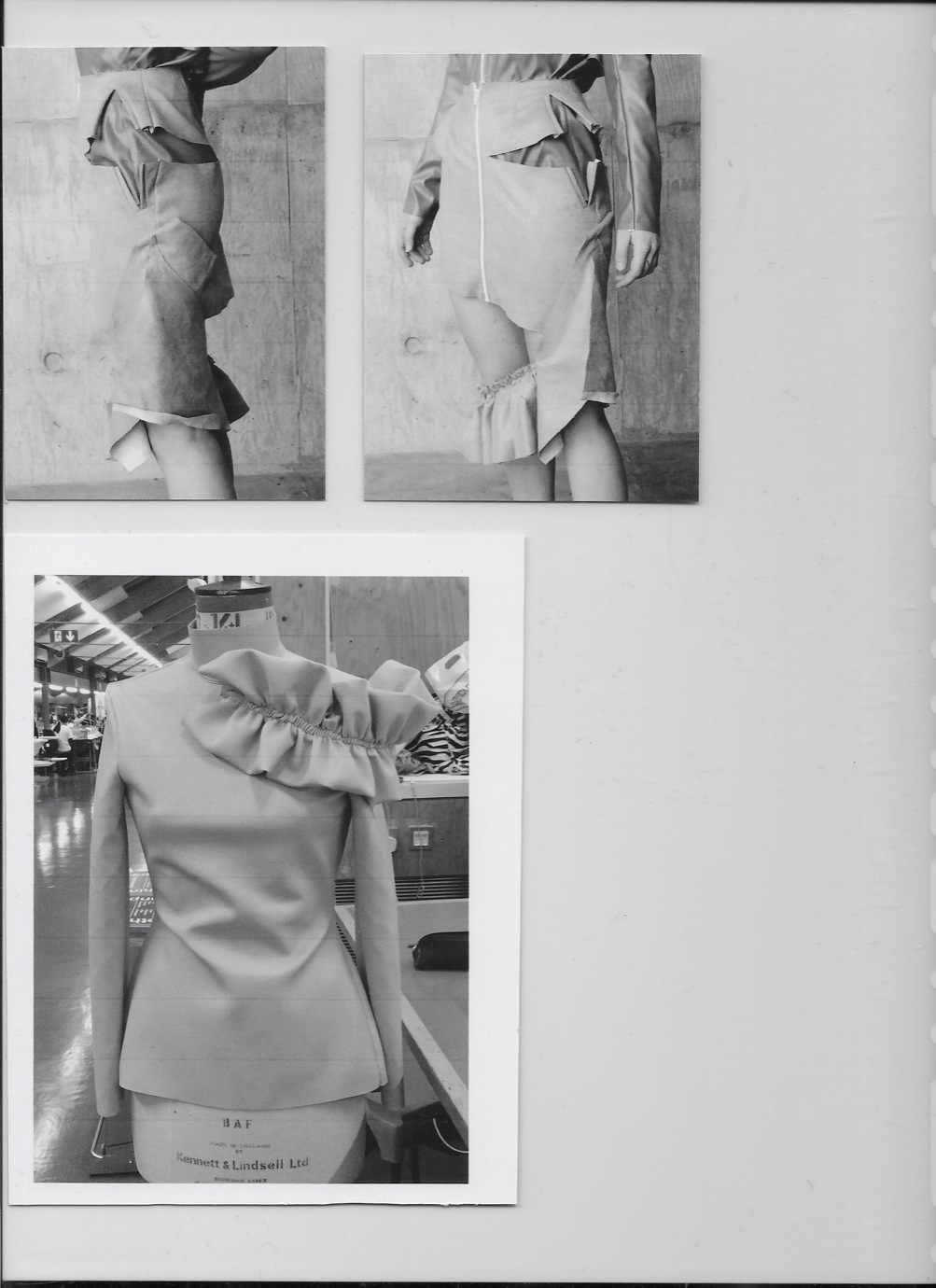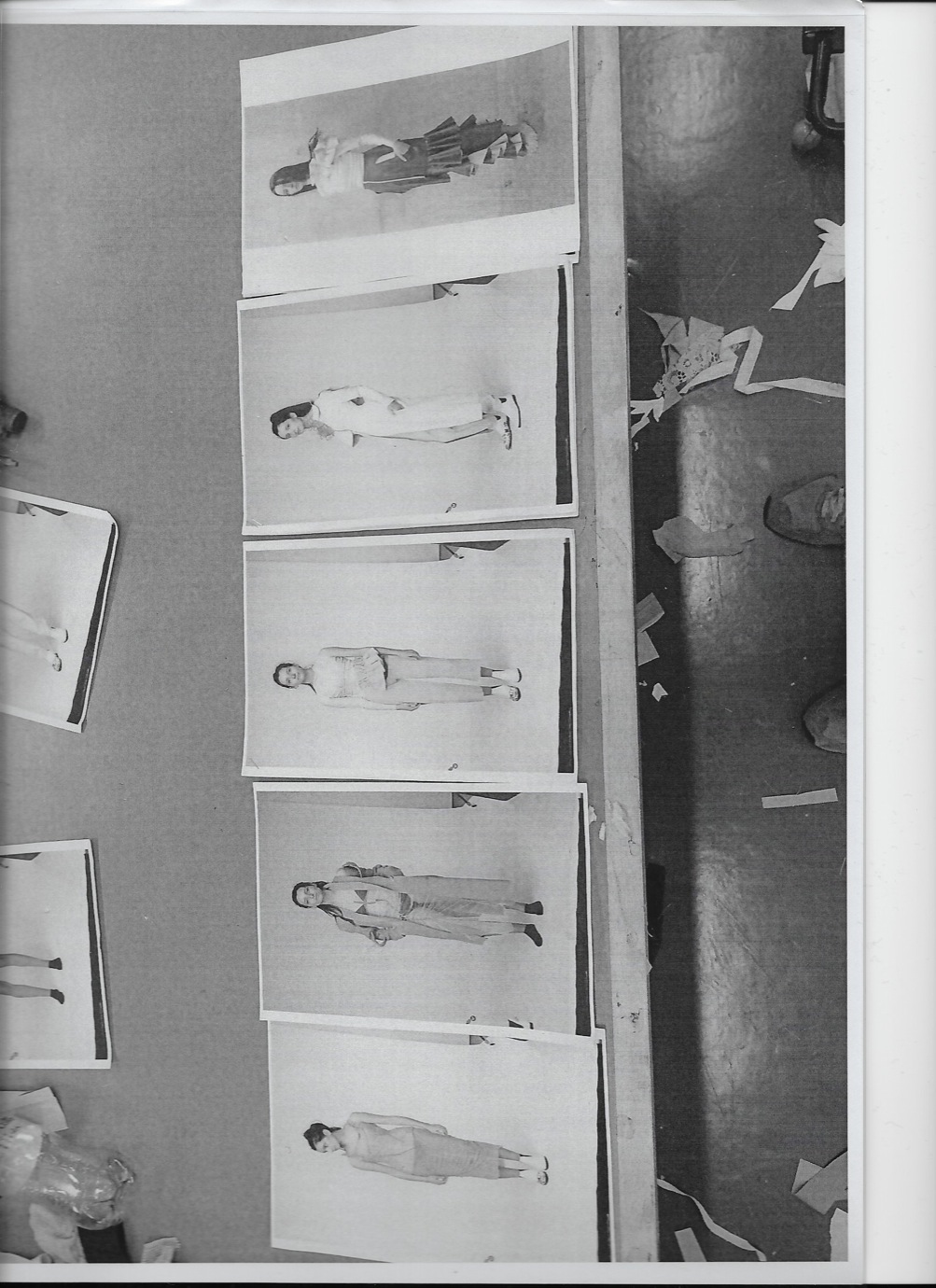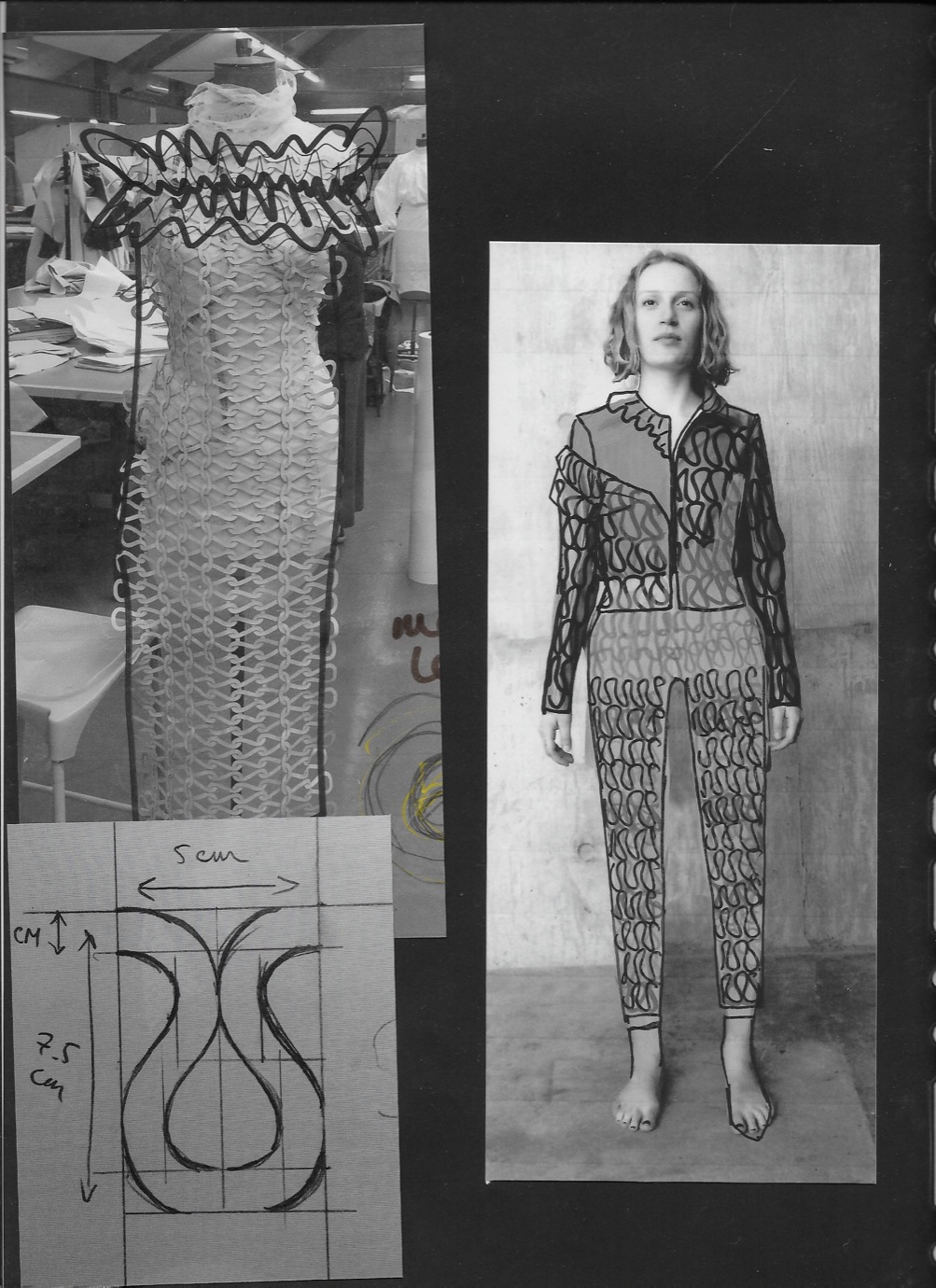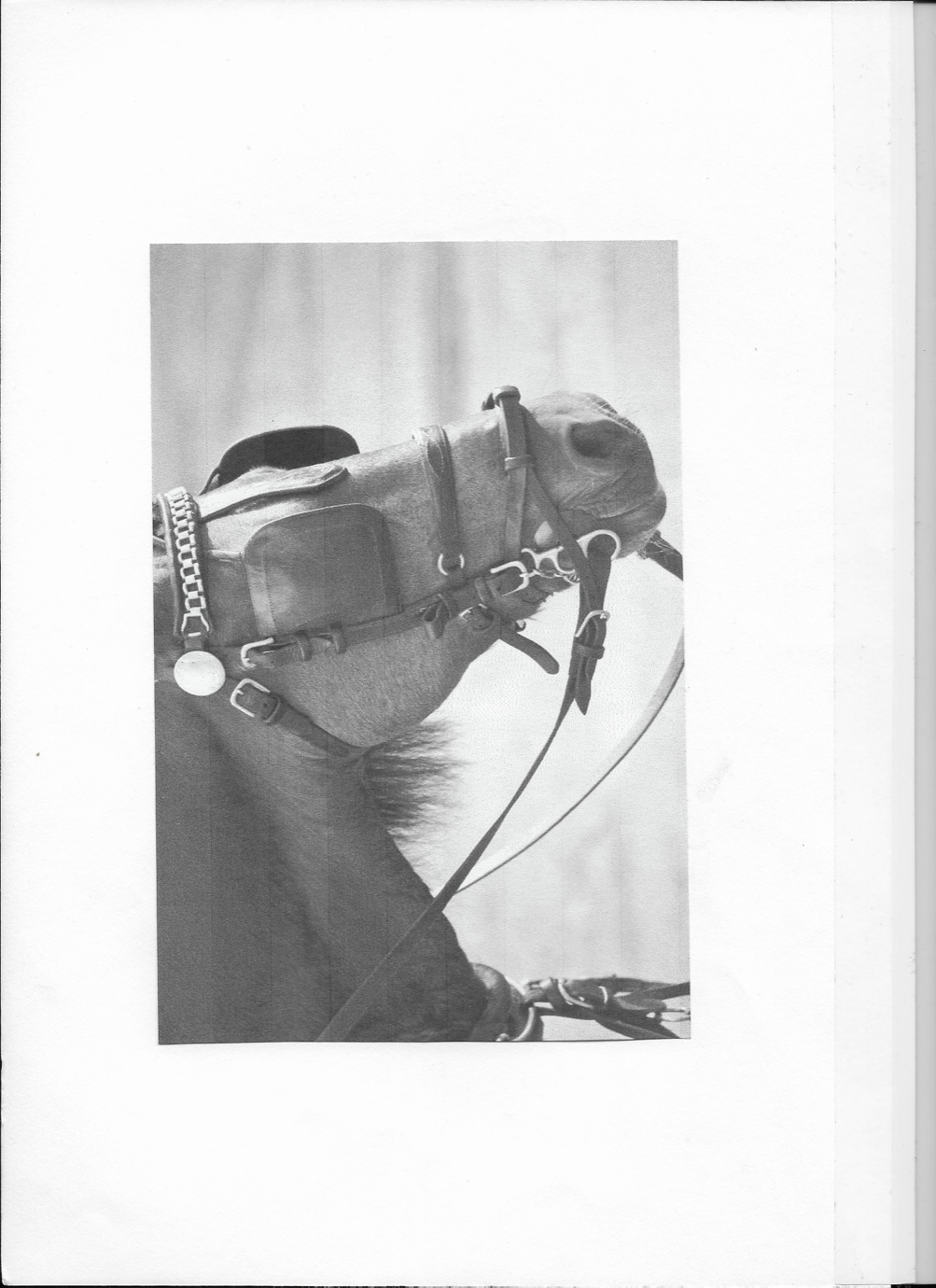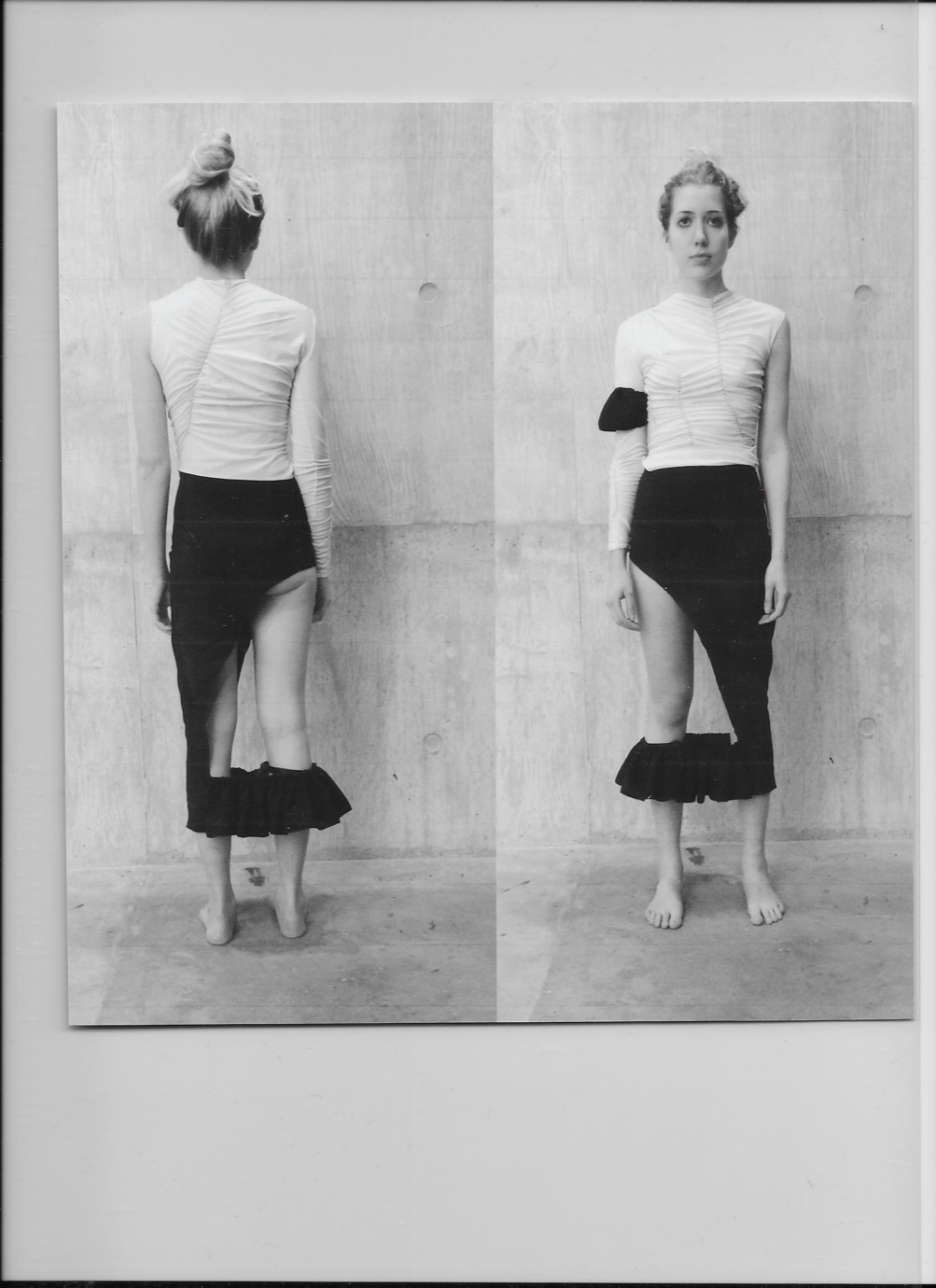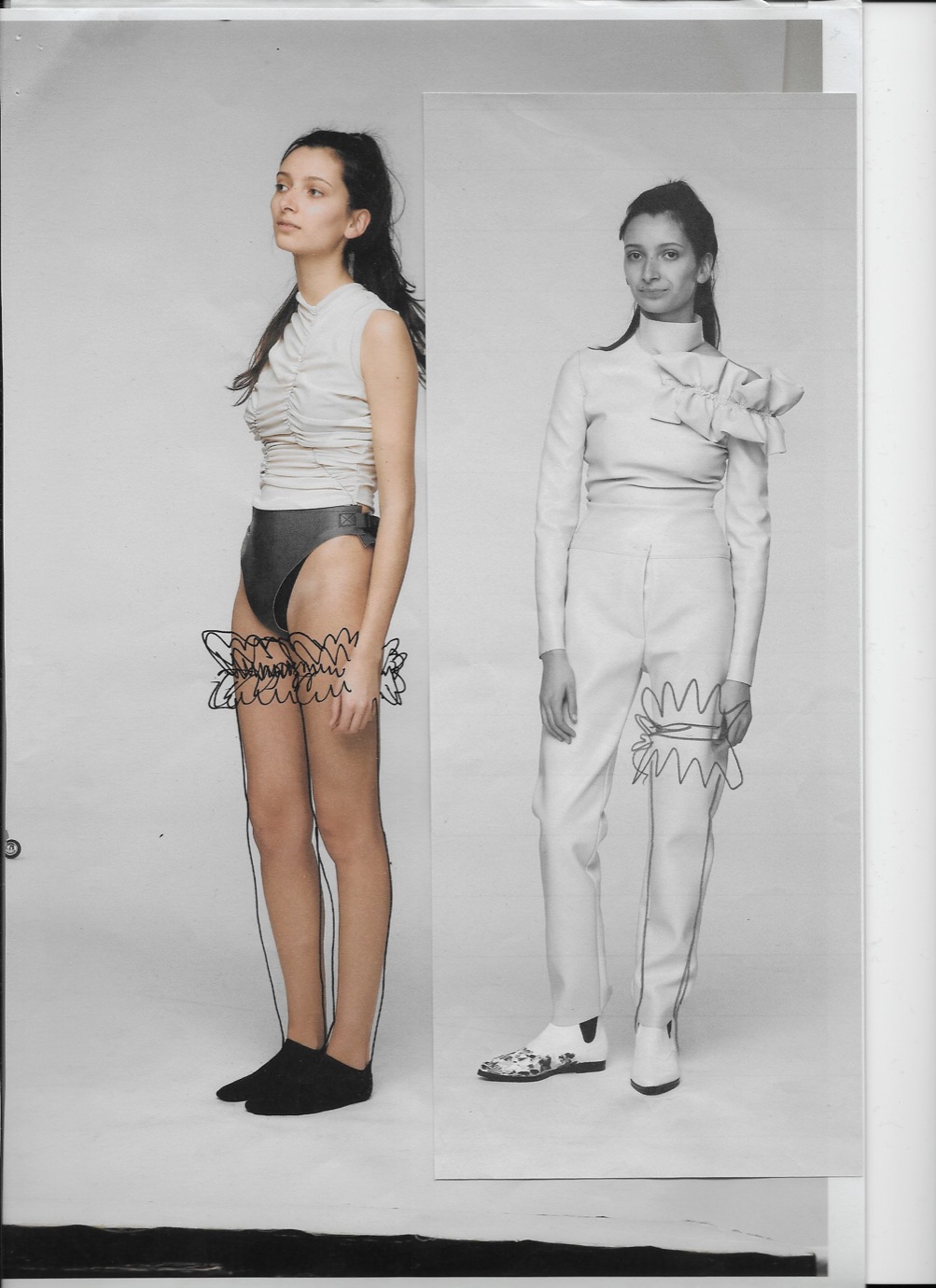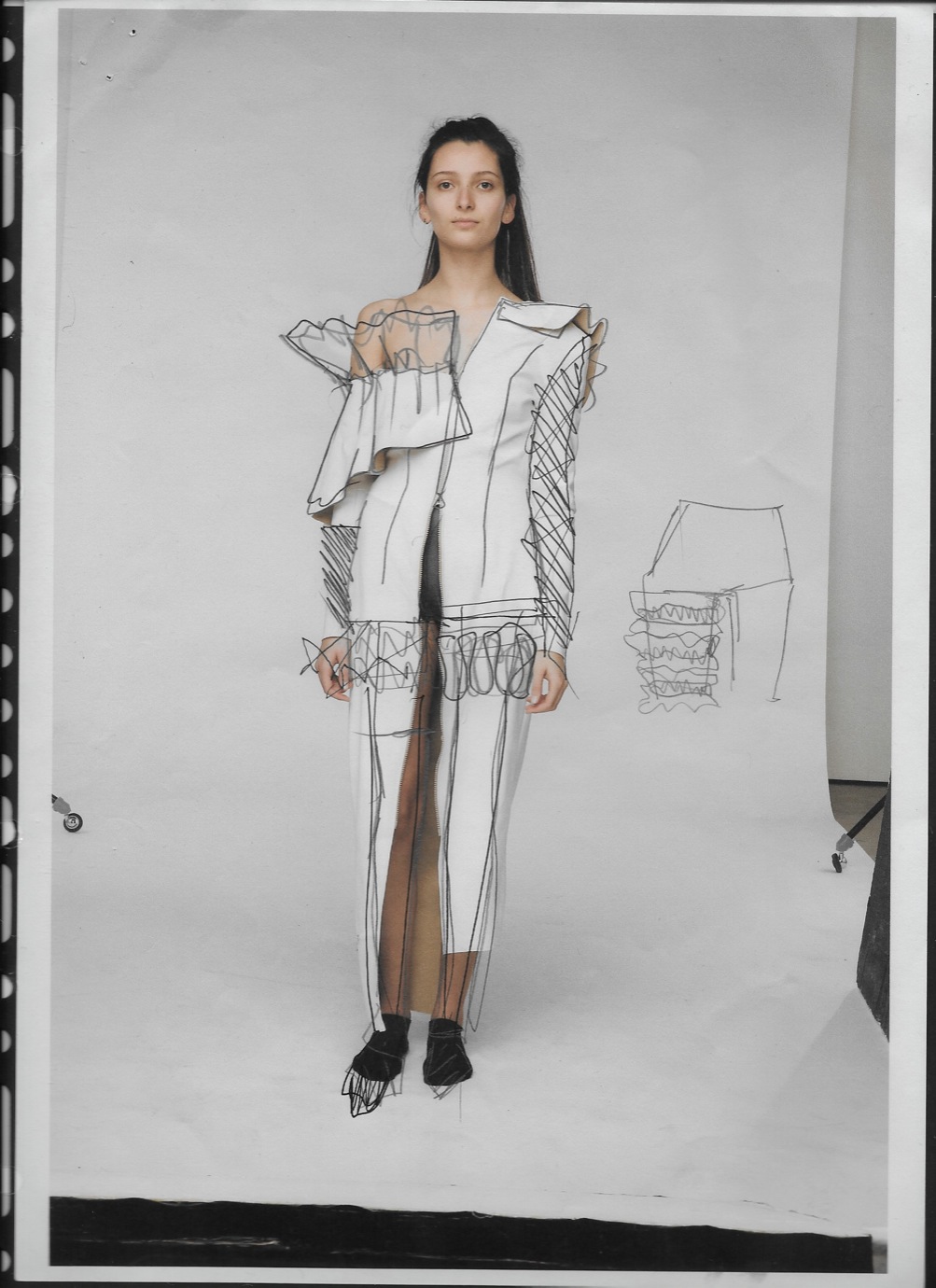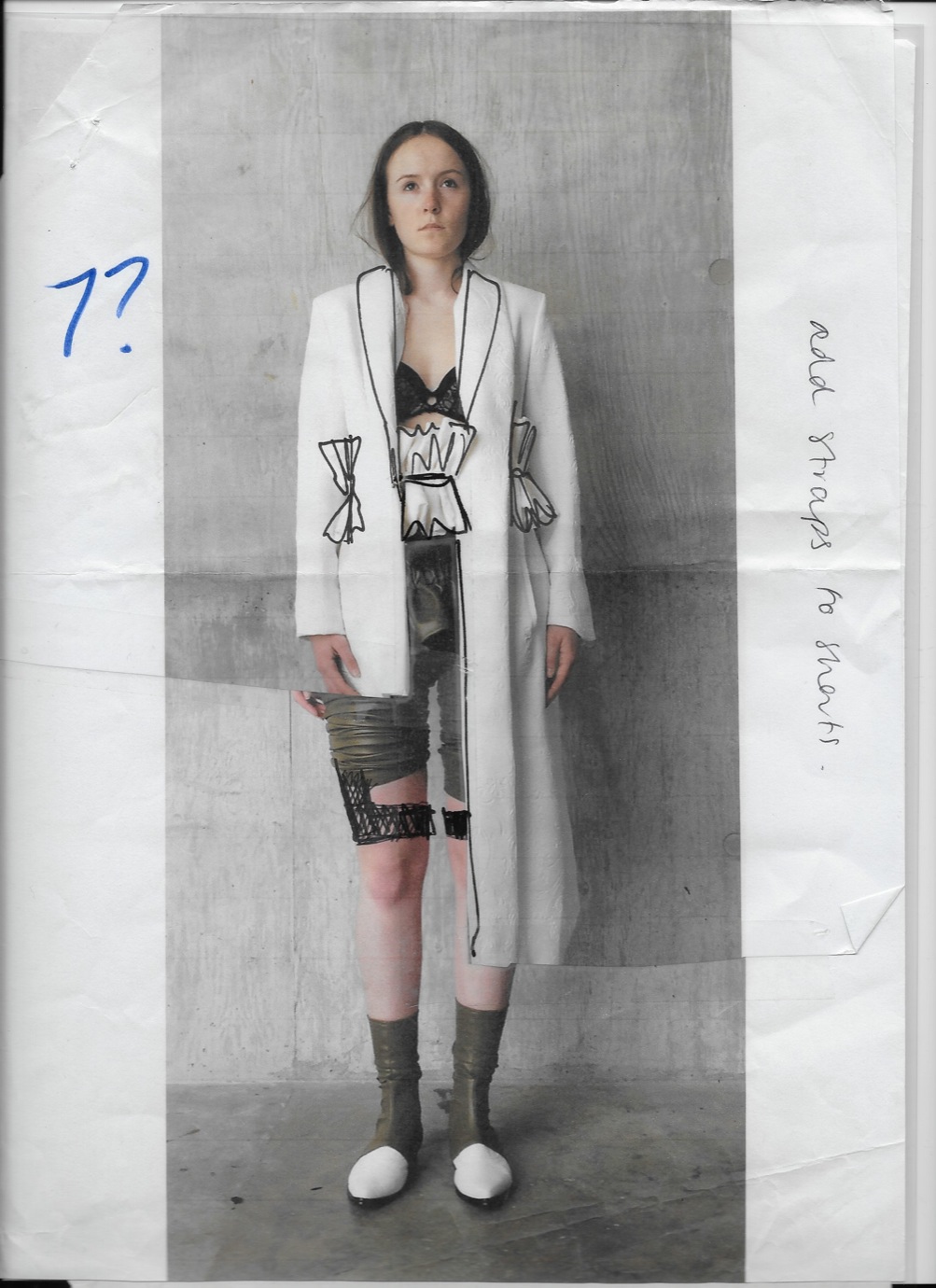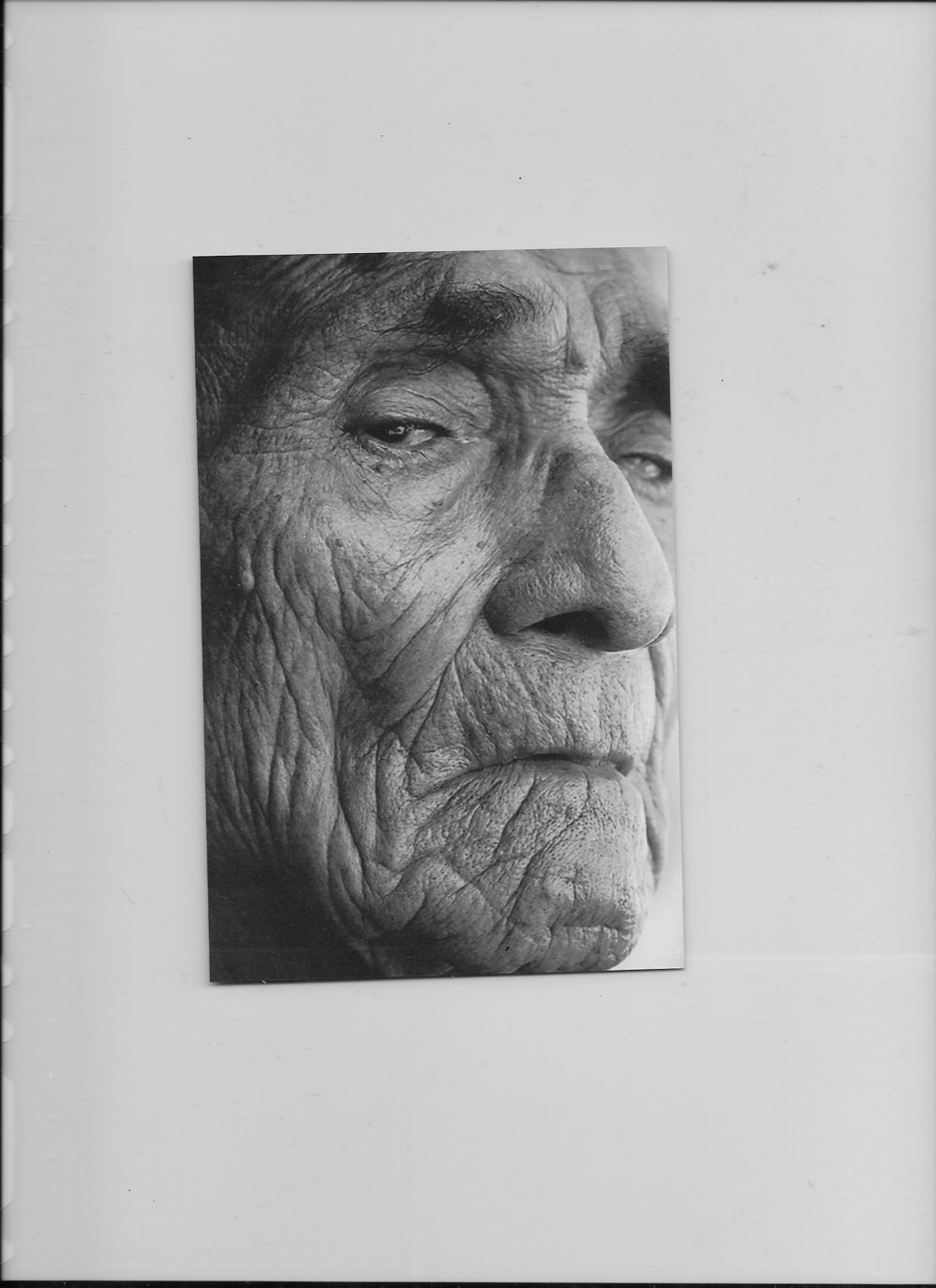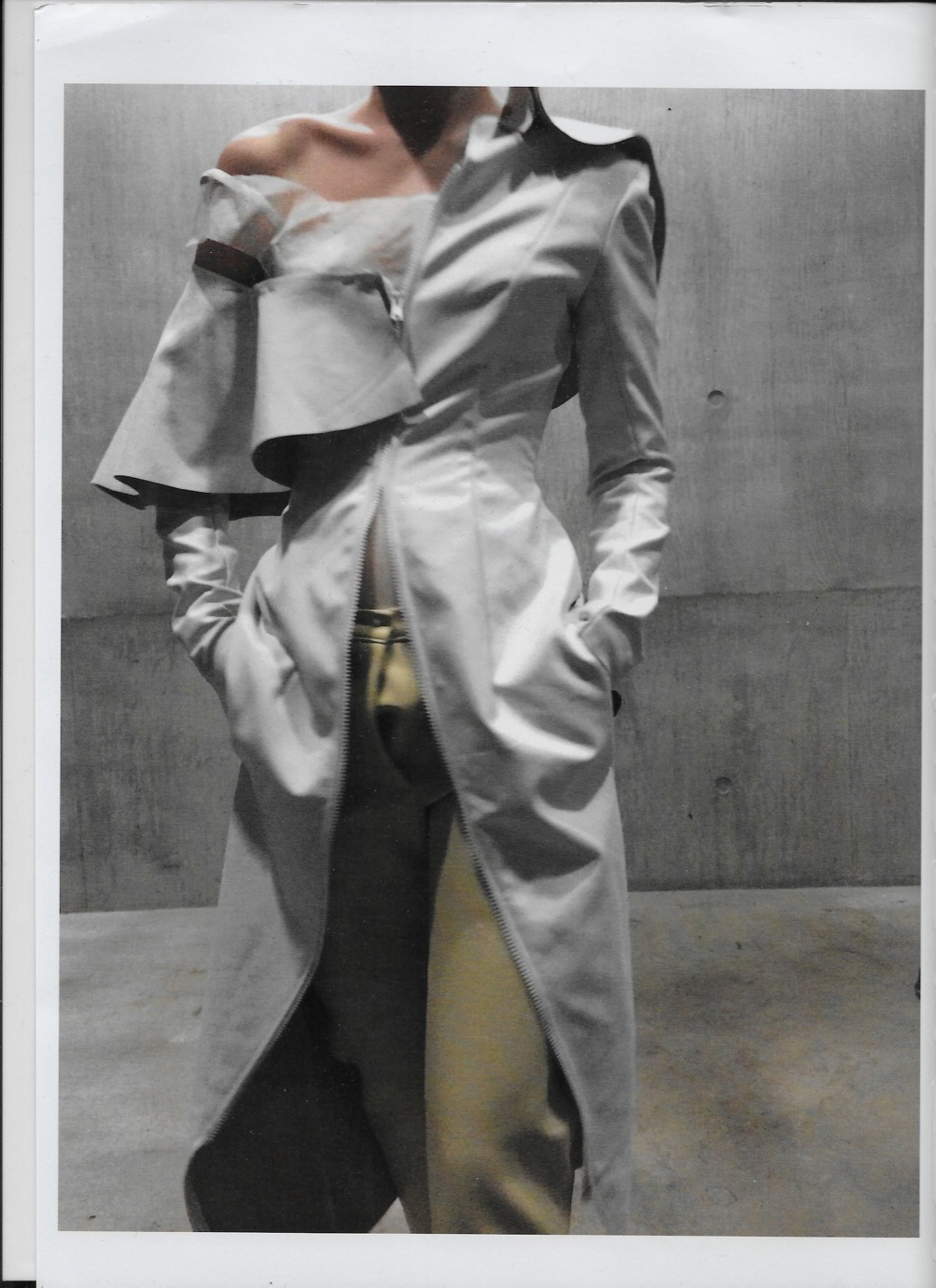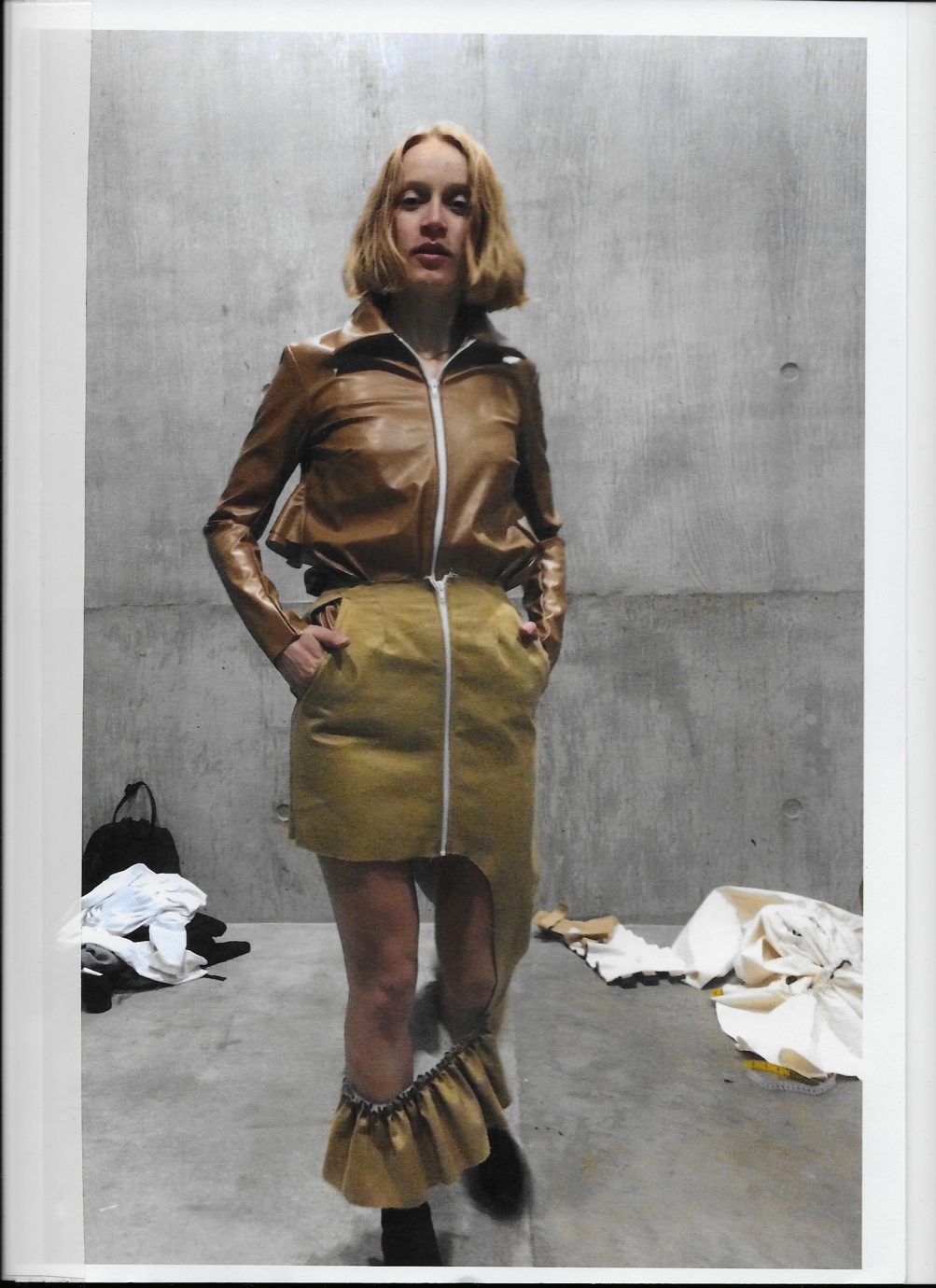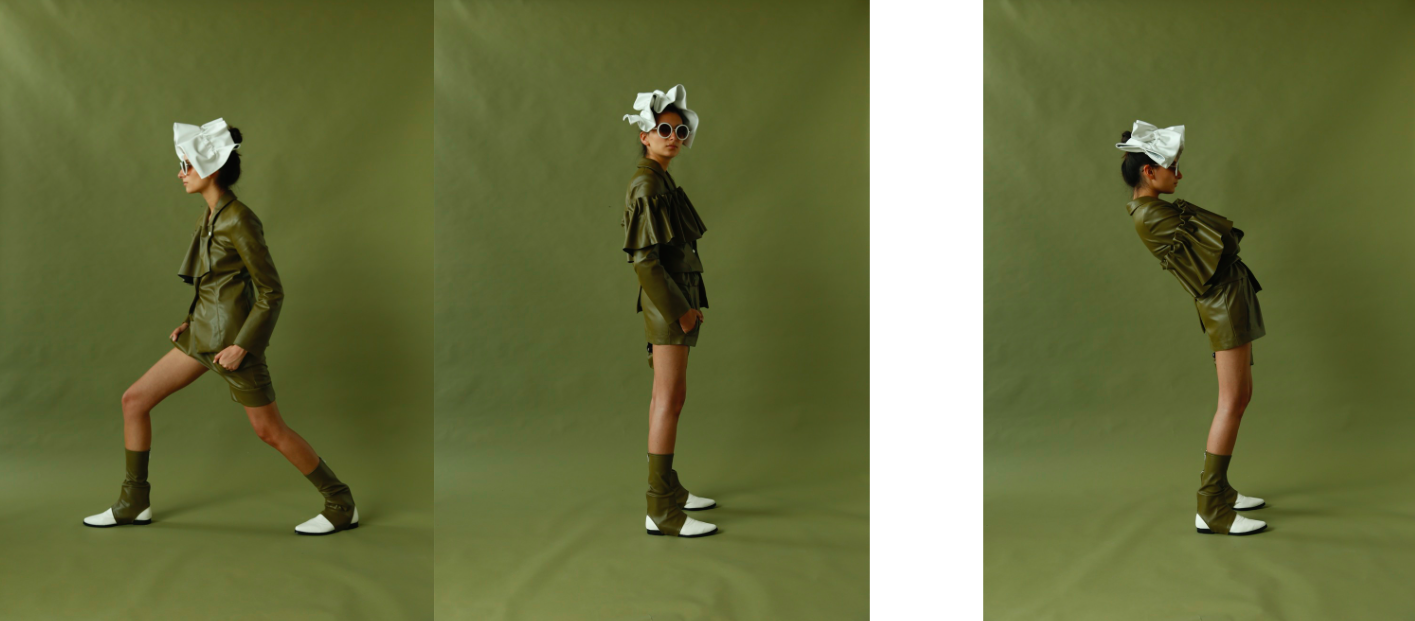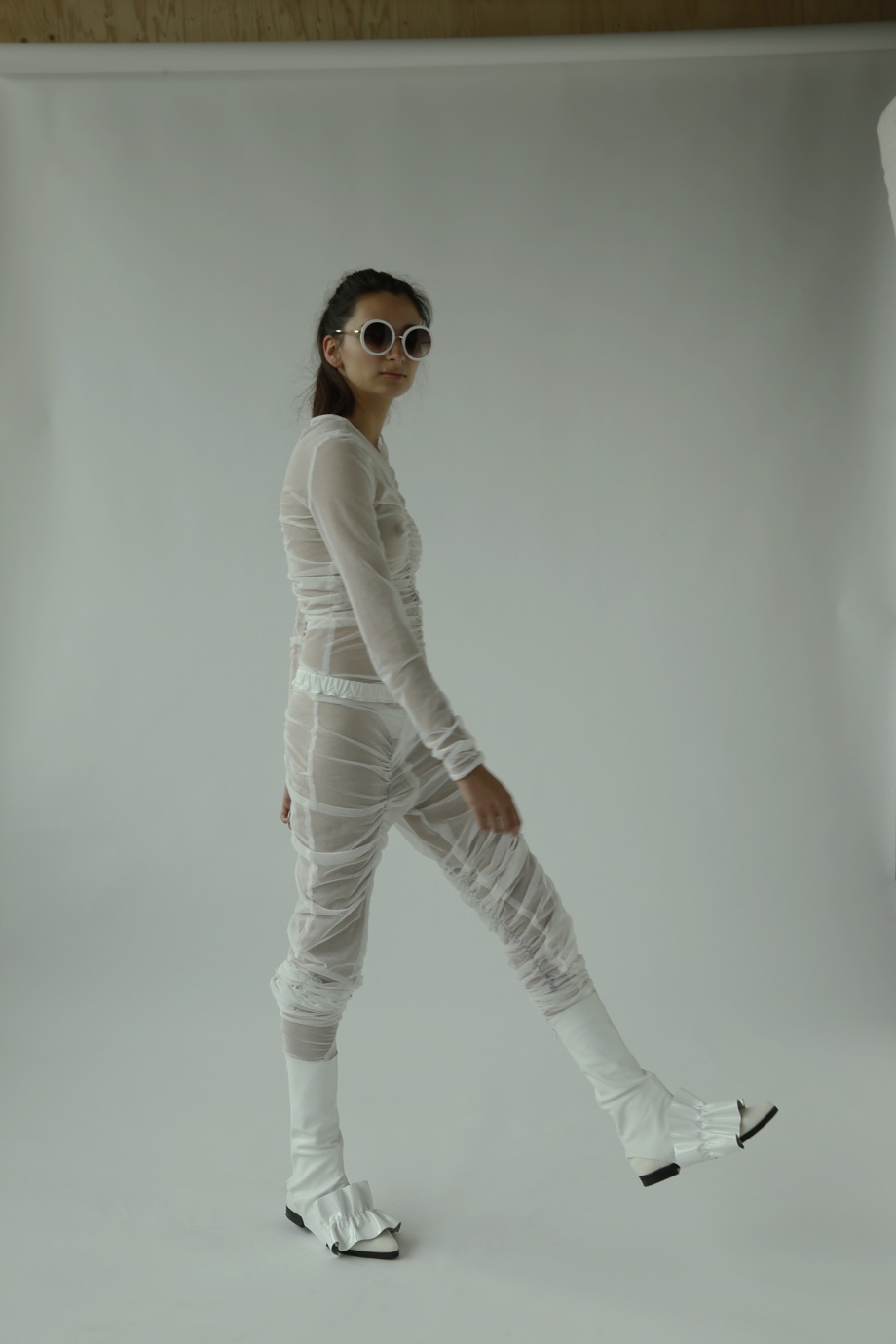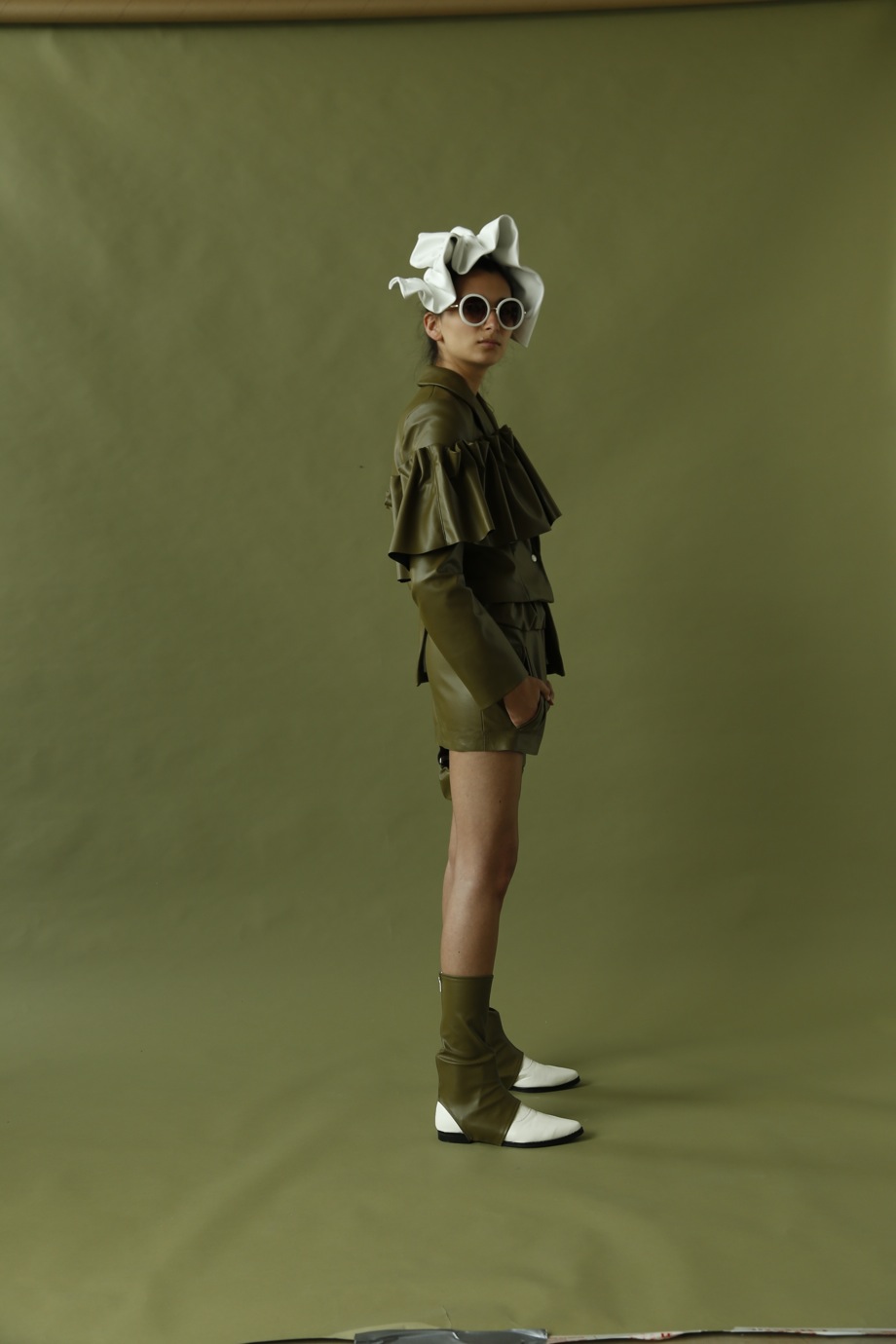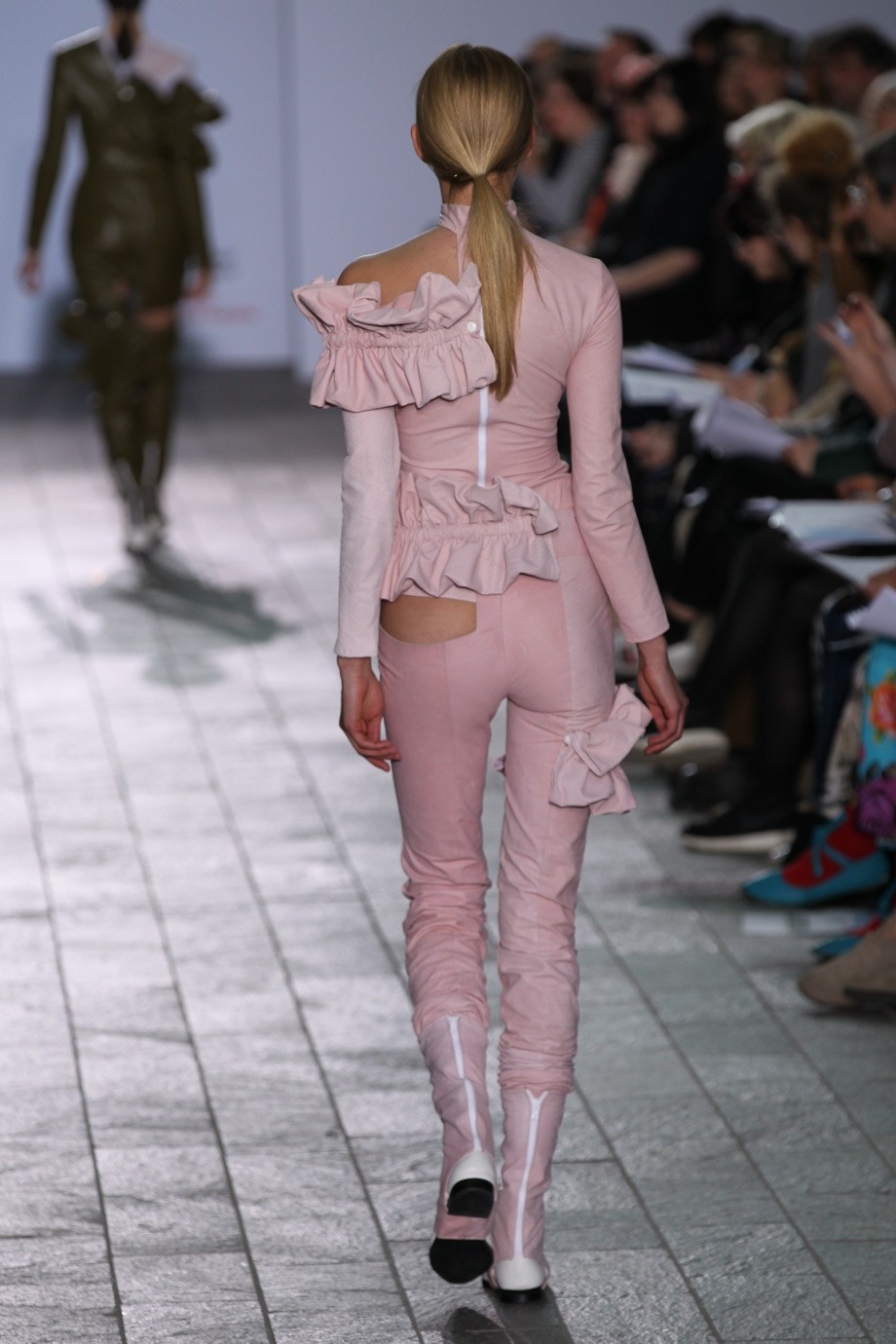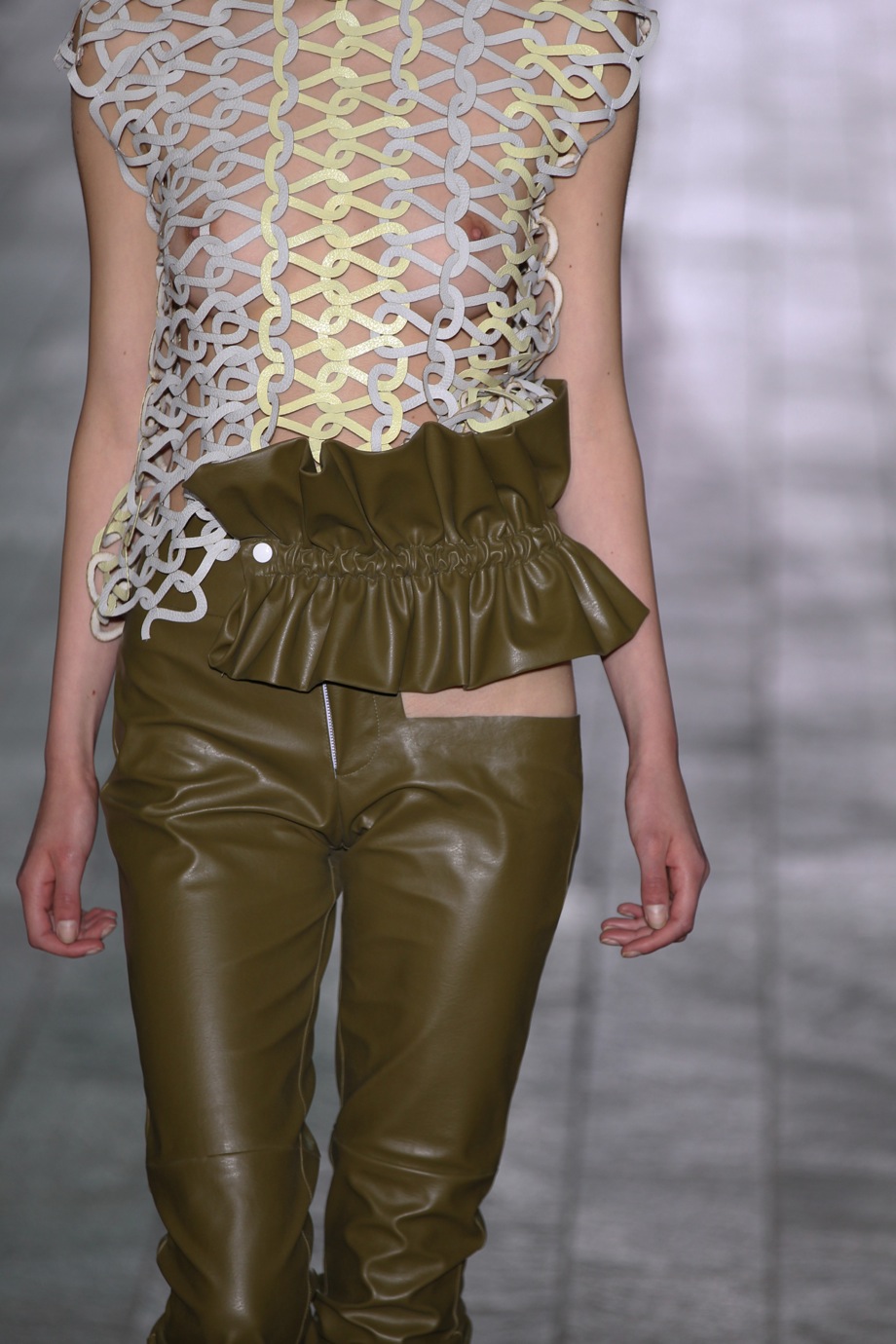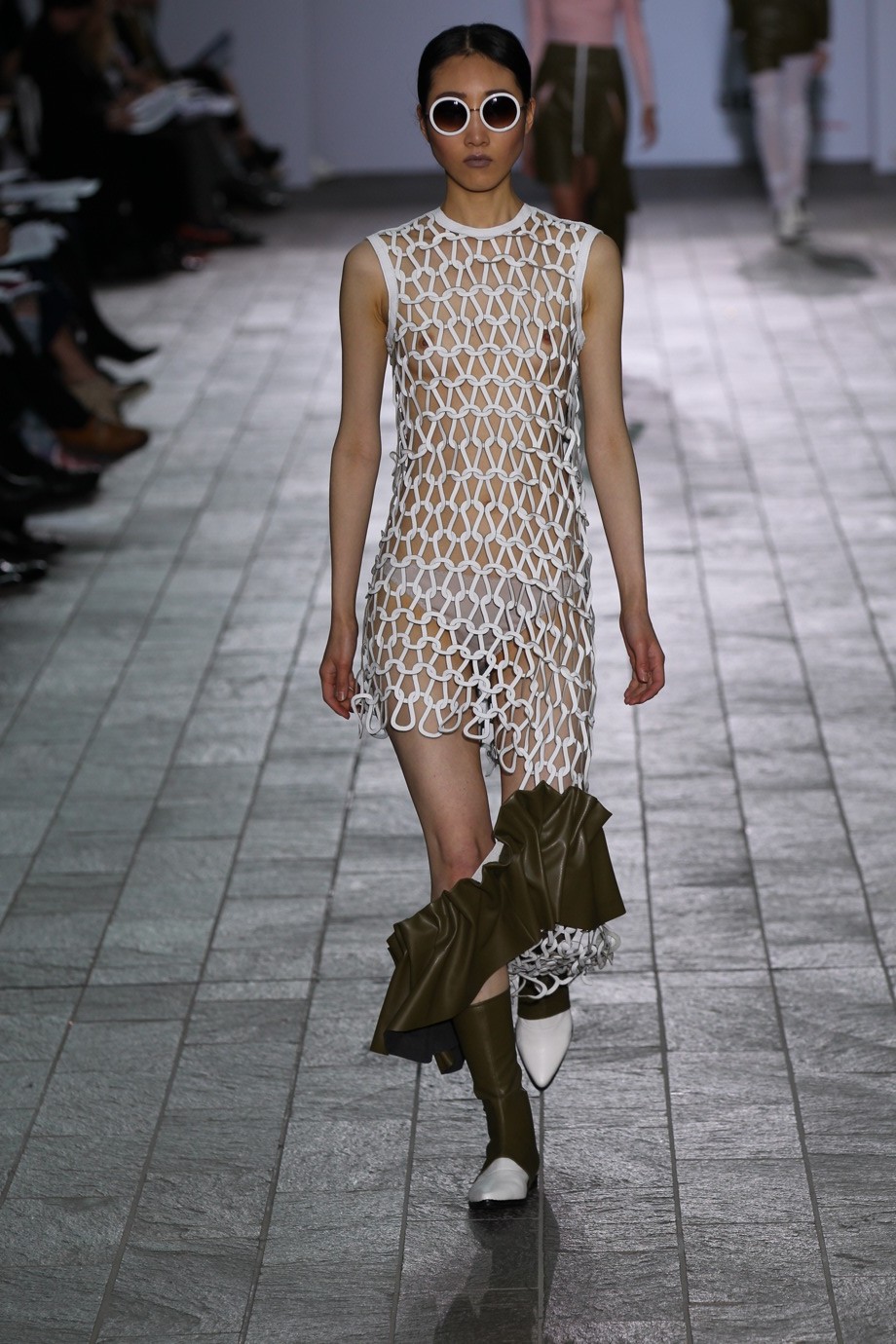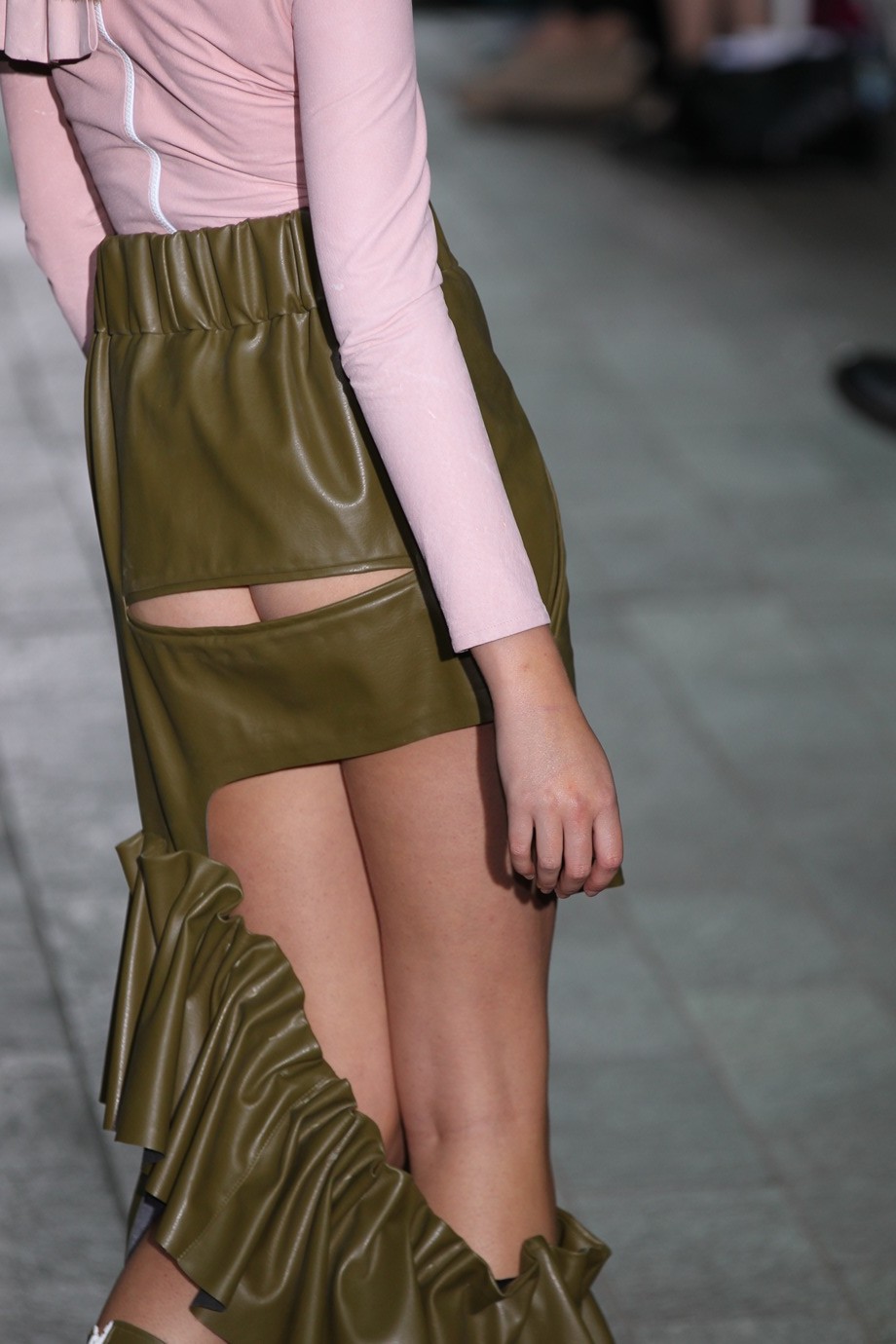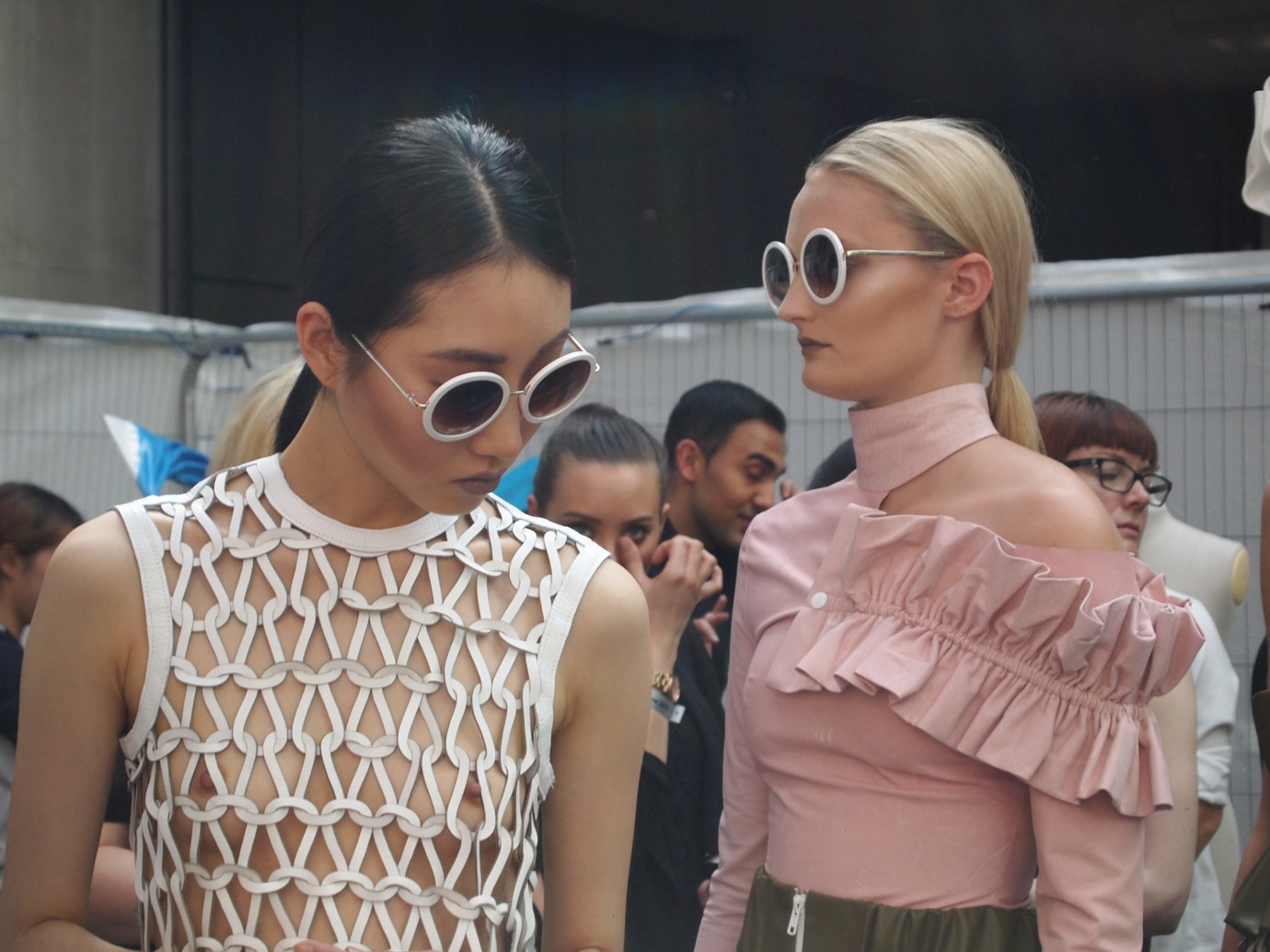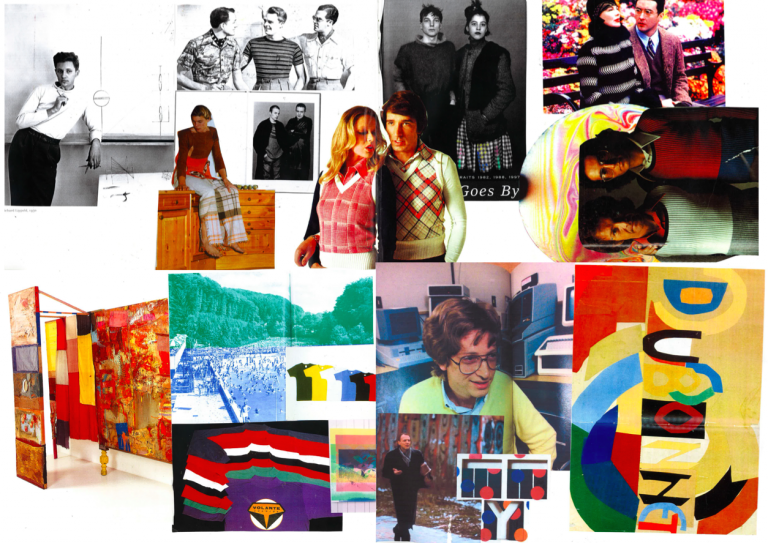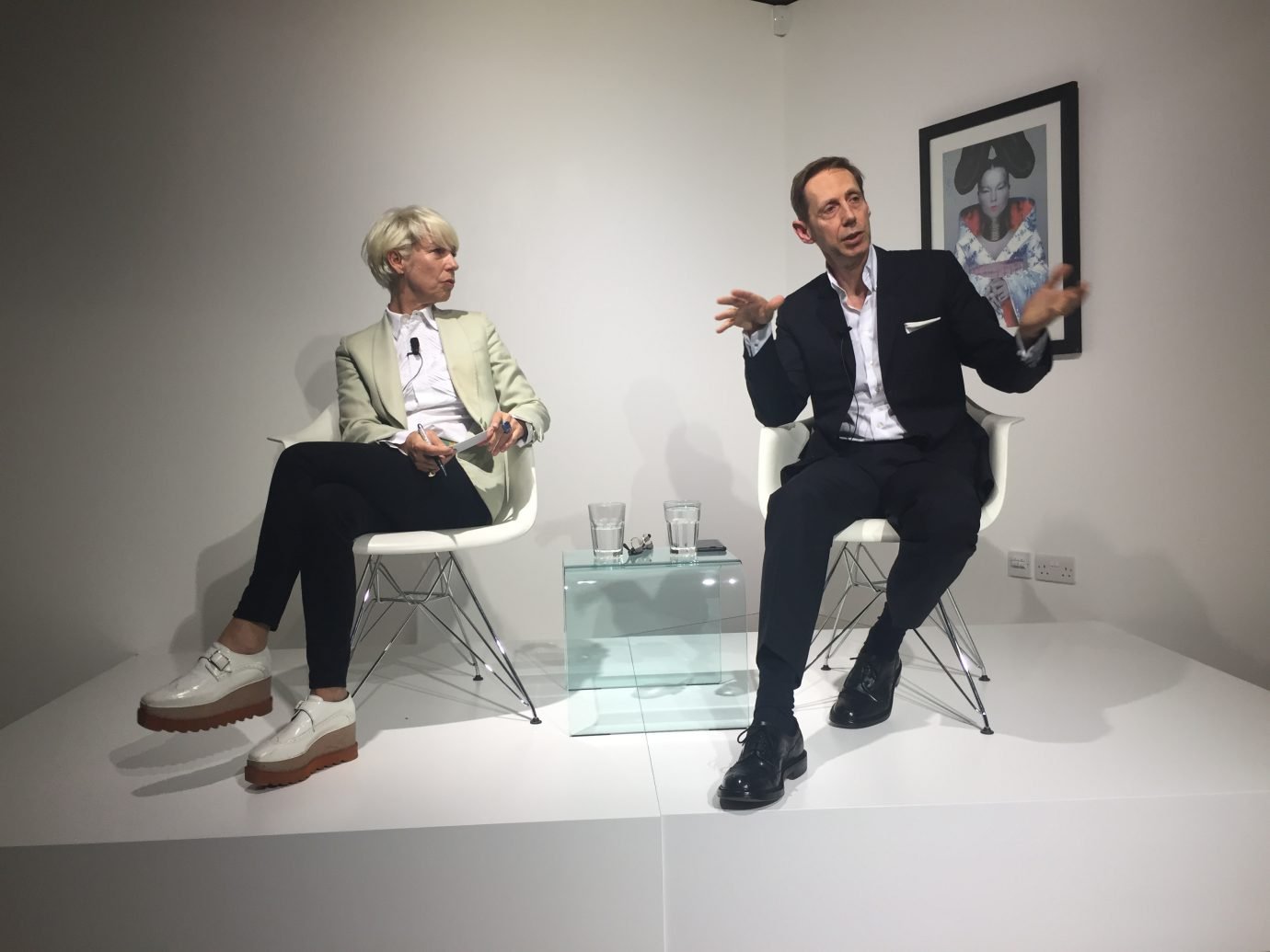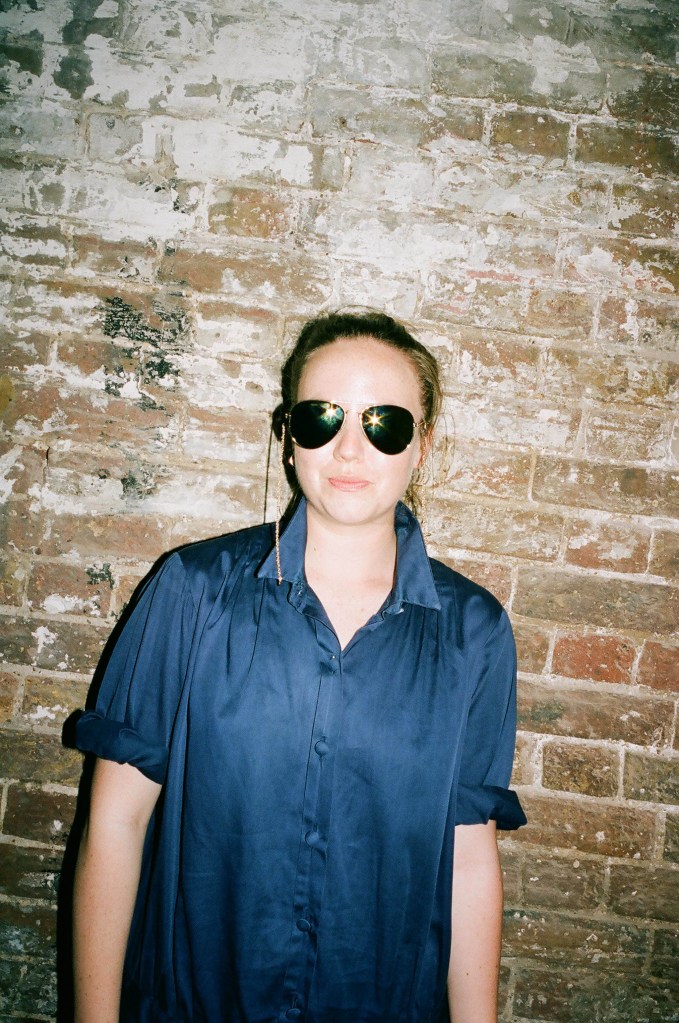To Robert, the Womenswear pathway of Central Saint Martin’s BA Fashion course was the only real option for him. He consciously focuses on the clothing itself, without much attention to embellishment or print. “The silhouette is what interests me most,” he explains over e-mail. “I can appreciate all the other stuff, but personally, when I work it’s never something that has the strongest draw for me.”
“I NEVER REALLY AIMED FOR THERE TO BE A SPECIFIC CONCEPT BEHIND IT, WHICH PERHAPS IN HINDSIGHT WAS DETRIMENTAL, BUT C’EST LA VIE.”
Kept in white and shades of pink and moss green, Robert’s graduate collection is a playful exercise in textile manipulation, and how it actively re-shapes the wearer. Tailored jackets are distorted with a shawl collar and paired with asymmetric half skirt/half shorts bottom pieces. Incredibly whimsical in their expression (his manipulated tops evoke wrinkled skin), the garments are left clean; achieving some kind of balanced maturity, paving the way for a more profound appreciation of the incredible craftsmanship that goes into creating such pieces. His research shows far and wide-reaching inspiration, but is always united by attention and fascination for textile manipulation, and particularly, toiling, which came to direct his whole project. “I never really had a specific idea that I wanted to go back to with the design or research, so it really developed just through the toiling itself, and then I tried to include whatever I found interesting at the time,” he says of his loosely-guided process of creating his final collection. “It was playing around a silhouette of the body, and taking away parts of that silhouette. I had a pair of trousers with a cut-out for a toile that was really the basis for everything, and something I would always come back to.” As I mention some recognisable references to bondage, he welcomes that observation, whilst denying that it was a conscious reference in his conceptual development. “ I’m generally interested in clothing that is aware of the body. But when I started the collection I never really aimed for there to be a specific concept behind it, which perhaps in hindsight was detrimental, but c’est la vie.”

